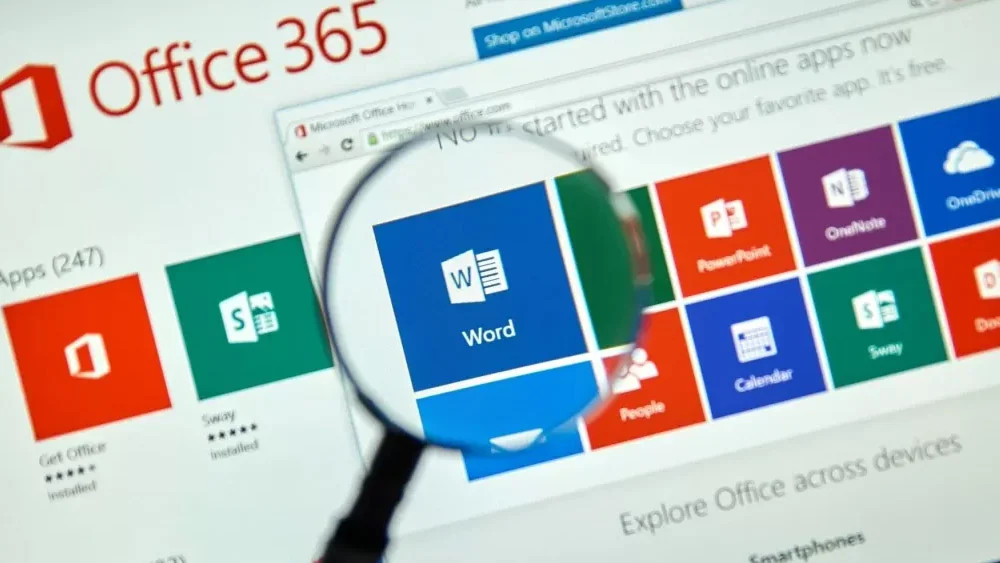Techies out there–have you ever thought about how the applications and websites we use in our daily lives are powered? The .NET Framework developed by Microsoft helps developers create diverse applications. If you are a budding programmer, an entrepreneur looking into possibilities, or an interested layman wanting to know about current and future developments, it is useful to understand .NET opens possibilities. Now let’s demystify this complex concept that has several dimensions!
Decoding .NET Framework
So, what is the .Net framework? Fundamentally, the .NET Framework provides an extensive toolkit, including libraries, tools, and interfaces to construct applications. Unveiled in 2002 by Microsoft, it aims to simplify building apps and promote cross-platform operability.
Specifically, .NET development outsourcing furnishes the basis to develop varied solutions from desktop programs, web services, and mobile applications to games. It consists of runtime machinery, class library, and development utilities, all engineered to streamline coding and elevate performance.
Dissecting Key Components
Let’s examine the integral components:
- Common Language Runtime (CLR): The powerhouse handles app execution through memory management, security, and ensuring seamless cross-platform functionality.
- Class Library: A vast vault of pre-defined classes and codes spanning data, networks, UI, and security. This repository saves time by providing ready-to-program building blocks.
- Development Tools: Microsoft’s suite, topped by Visual Studio, meshes smoothly with .NET Framework. These utilities enable coding, debugging, and deployment – optimizing development endeavors.
Illustrating .NET Framework’s Wide Applications
.NET is a framework that powers an incredibly diverse array of end-user solutions, spanning productivity software used daily by millions worldwide to niche scientific tools relied upon by cutting-edge researchers! Here are some prime .NET Framework examples depicting the remarkable breadth and depth of applications built using the .NET Framework:
Microsoft Office Suite
The Microsoft Office suite, including iconic productivity tools like Word, Excel, and PowerPoint that clock billions of usage sessions, are all built atop the .NET application platform! Like all applications, the Office suite requires capabilities like securely interfacing with files stored on disks, rendering complex user interface designs, managing computational logic, and integrating with useful cloud services. Building all such plumbing from scratch is simply not viable given tight product release deadlines.
Here, the .NET Framework fulfills a crucial role by supplying fundamental building blocks for data storage, visualization, networking, security authorization, and more. This enables the Office product teams to channel their precious engineering effort into crafting differentiating capabilities like real-time coauthoring, integrating mixed media like 3D models into documents, or applying machine learning to suggest design improvements. Thereby driving adoption and keeping customers delighted.
Windows Presentation Foundation (WPF)
The Windows Presentation Foundation framework enables building desktop applications with stunning interactive experiences rivaling modern web interfaces. For instance, WPF applications support dynamically restyling and animating user interface elements using XAML markup language and integrating multimedia like 3D visualizations. These delight end users and spur adoption.
WPF rides on top of the standard .NET plumbing for security, storage, and connectivity. This frees developers to focus exclusively on the presentation layer logic without grappling with nitty-gritty infrastructure aspects. The net result is enhanced programming velocity and more time for UX iteration to craft truly compelling desktop solutions.
ASP.NET
ASP.NET powers the bulk of modern, dynamic websites and web platforms. These websites and platforms are where users interact on a daily basis for work, education, or leisure! Under the hood, web applications built using ASP.NET generate and adapt HTML interfaces displayed on the client side by tapping into .NET Framework capabilities like UI templating, session state management, and query processing on the server side.
This clean separation of concerns with UI rendering happening within the browser and bulk data processing and number crunching on the backend server has crucial benefits. For one, it allows web applications to handle fluctuating traffic gracefully by scaling up servers transparently without impacting end-user experiences.
Secondly, ASP.NET simplifies adapting desktop-class interfaces to mobile screens by handling conditional template rendering on the server side. Finally, using .NET for server-side coding allows reusing business logic across website, mobile, and desktop interfaces, saving enormous development effort.
Unity Game Engine
The Unity game engine powering immersive 2D & 3D experiences across various gaming platforms leans heavily into the .NET ecosystem for enabling scripting and overall application development. Unity allows developers to code game logic, physics simulations, and customizations using C#. This is rather than needing to tackle convoluted native languages like C++.
This vastly lowers the barrier to entry for programming games while benefiting from the safety, simplicity, and expressiveness of modern languages like C# that build upon decades of learning around security, modularity, and code readability. In turn, developers can use the wealth of .NET libraries for added capabilities like networked multiplayer experiences. By abstracting away the complexities of coding games natively, Unity empowers millions of enthusiasts to innovate on interactive experiences and has led to a thriving ecosystem.
Use Cases of .NET Framework
Here are some foremost use cases:
- Windows Desktop Apps – From utilities to enterprise solutions, it enables programming applications accessed via Windows PCs and tablets.
- Web Applications – ASP.NET powers robust responsive websites with rich server-side and client-side functions.
- Mobile Application Development – Frameworks like Xamarin facilitate cross-platform mobile app building leveraging .NET and C#.
- Enterprise Solutions – It aids large systems like CRM, ERP software, and other business-critical tools.
- Game Development – Combined with the Unity game engine, it provides a robust environment for creating immersive games.
Platforms Supported
Now we will explain what the .NET Framework is used for and which platforms support it. A key design tenet behind the .NET Framework is enhancing developer productivity by abstracting away the complexity behind target platforms on which developers build applications. Let’s examine how .NET empowers writing applications for diverse platforms:
Windows Desktop
Given Microsoft’s heritage with Windows operating systems, it comes as no surprise that .NET Framework offers native support for crafting desktop applications targeting Windows installations. Developers benefit from direct access to Windows APIs. They also use the ability to deeply integrate with native desktop components like Explorer shell, along with tapping into hardware accelerations wherever feasible.
Furthermore, desktop developers can choose the right mix of interface frameworks. For instance, Windows Forms for simpler apps that embrace native styling versus WPF for crafting custom, media-rich experiences. Under the hood, .NET’s Common Language Runtime handles compiling and optimizing the target code for peak performance across generations of Windows editions. Also, open-source .NET Core allows applications to be operable on Windows, macOS, and Linux. The result is future-proof applications that stand the test of time while giving developers fine-grained control where needed.
Web Applications
Through ASP.NET frameworks, developers enjoy first-class support for building web solutions that abstract away complex infrastructure management like load balancing requests across servers or caching computationally intensive operations. ASP.NET takes care of these plumbing tasks in a largely transparent fashion while giving programmers control over the request processing pipeline.
For instance, developers can plug in customized authentication logic or route requests based on specific conditions to appropriate handlers for added flexibility. On the client side, ASP.NET furnishes a multitude of UI components tailored for responsive experiences across desktop and mobile. Furthermore, ASP.NET solutions deployed on Microsoft Azure cloud benefit from tight integration, like role-based access management leveraging Active Directory identities. The cumulative benefit is faster time-to-value for rolling out innovative web solutions.
Mobile Applications
While the traditional .NET Framework runtime is optimized for Windows workloads, Microsoft offers Xamarin as an innovative framework for building truly native iOS, Android, and Windows mobile applications using existing C# skills. Xamarin apps compile down to platform-specific binaries that tap directly into underlying native SDKs for peak performance.
Types of .NET Framework
In the past, Microsoft has produced different versions of the .NET Framework, each with its characteristics and enhancements. Approximately 25.3% of respondents in 2022 utilized the.NET Framework (5+), whereas approximately 17% used the.NET Framework (1.0–4.8). Data analysis and machine learning technologies have shown growth in usage.
.NET Framework
This is the first version of the framework and is intended to be used in Windows applications. It has been updated and released several times, and the latest is .NET Framework 4. 8.
.NET Core
Introduced in 2016, the .NET framework is designed to be modular and lightweight to support multiple platforms.
.NET Framework.
It is modular, lightweight, and built for modern workloads such as cloud-native applications, microservices, and IoT.
. NET Standard
This is a formal specification that defines a set of APIs that all. The following interfaces are mandatory for NET implementations (.NET Framework, .NET Core, Xamarin): It enhances code reusability and makes it easy to share code with other developers and .NET Framework platforms.
Xamarin
Although it should be noted that it is not a version of the .NET Framework, Xamarin is one of the most famous tools for developing mobile applications using C# and .NET. It enables developers to reuse up to 60% of the code used in developing applications for different mobile operating systems like iOS, Android, and Windows.
.NET 5/6/7/8
These are the most recent versions of the .NET platform. They integrate the functionalities of the .NET Framework and .NET Core is a new development that aims to offer one framework for all kinds of applications.
Conclusion
Well, that was quite a ride through the .NET Framework! Now you know what the basics of the .NET Framework mean. As you can notice, this great platform has greatly changed the process of software development. It allows developers to create secure and highly flexible applications for different fields and operating systems. Whether you are already a professional coder or you are just beginning your coding journey, it is important to know that the .NET Framework can provide an opportunity to open up a new perspective and discover new development opportunities.
Note that this is only a brief .NET Framework overview of the phenomenon; the .NET ecosystem is not stagnant and new features and improvements are being introduced frequently. Therefore, continue discovering, continue studying, and above all, continue writing code!




